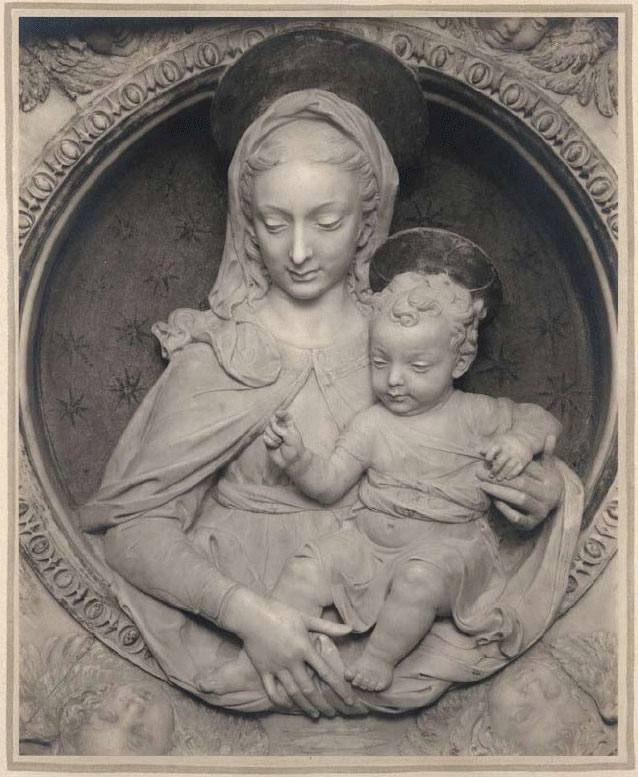- Relief printing
- Intaglio and planographic printing
- Color printing
- Bits and pieces
- Early photography in silver
- Non-silver processes
- Modern photography
- Color notes
- Color photography
- Photography in ink: relief and intaglio printing
- Photography in ink: planographic printing
- Digital processes
- Where do we go from here?
The dry plate

Gelatin silver print. Clarence Kennedy. Madonna and Child (Tondo Relief of the Madonna and Child). 1933. 11 x 8 3/4" (28.0 x 22.3 cm). The Museum of Modern Art, New York. Gift of Mrs. Lester Talkington in memory of her father, Clarence Kennedy © Estate of Clarence Kennedy.
The transforming technical innovation that created modern photography was the dry plate. Invented in the late nineteenth century, this new negative material completely supplanted the wet-plate process. All the old photographic technologies, whether for capturing images in cameras or printing them on paper, were chemical systems that the photographer assembled from raw materials. Photography had been much like cooking, with recipes to guide the practitioner, and secret formulas jealously guarded. The dry plate was a completely different thing. As the name implies, it was a light-sensitive plate that could be used dry without the need for immediate assembly that the wet-plate required. There is a large difference in the light energy needed to make a negative and to make a print.
The negative is usually made in a camera, whose lens focuses the light that goes through it so that any point on the negative only receives light from a single point on the subject. Because they were used dry, these plates could be manufactured and sold later on; because they were hard to make, their manufacture was taken out of the hands of photographers and instead was done in large manufacturing plants. These two changes marked the turning point between old and new photography. The dry plate held a light-sensitive silver salt in a gelatin emulsion on glass. The plates were far more sensitive to light than the older wet-plate; we say they had more “speed.” The coatings were also perfect, something that had never happened before, and to top it all off, any given box of plates tended to be absolutely consistent in quality. All of these characteristics gave photography a great boost in ease of use, as they took the task of making materials out of the hands of the artist. A similar thing had happened in painting when paints and canvas became available in manufactured form, but painting is difficult whether we make our own paints or not. Photography, on the other hand, turned out to be remarkably easy if the materials came in a store-bought box and had only to be exposed and developed. Whether the pictures so made were good or not is another question altogether. It is impossible to know if the dry-plate era made photography better or worse. The technology of dry-plate coatings quickly moved over to flexible film and then to paper for printing purposes. These new chemical coatings, whether on glass, film, or paper, completely supplanted all the older photographic processes. Wet-plate, albumen, platinum, and carbon all went into the junk heap under the assault of inexpensive, easy-to-use materials bought off the shelf of the local supplier. Now that the technical success of the picture was taken for granted, photography as a medium had to scramble to get its content back.

